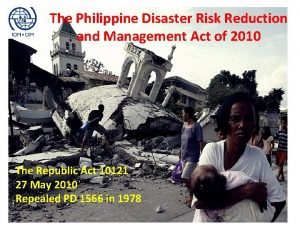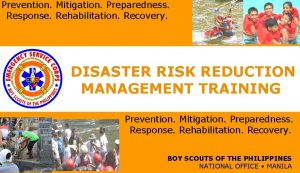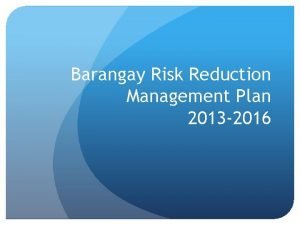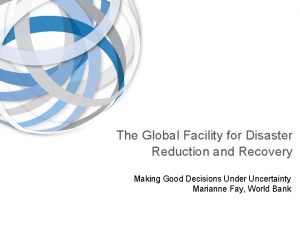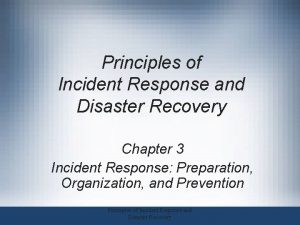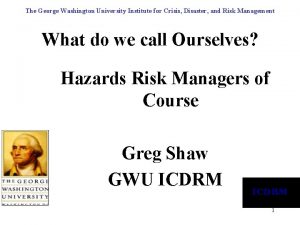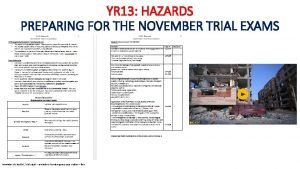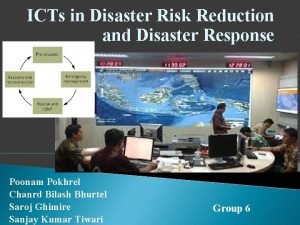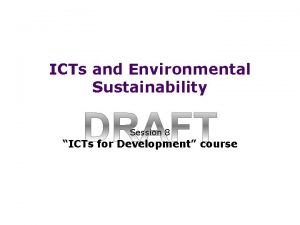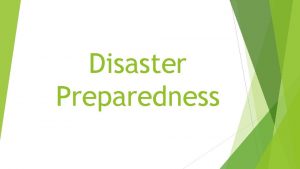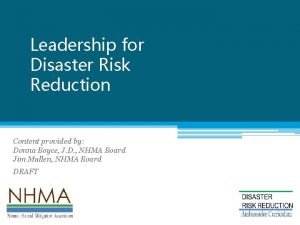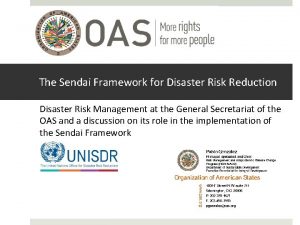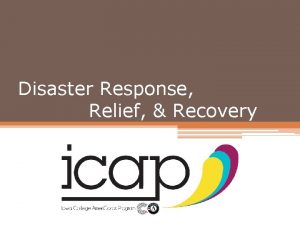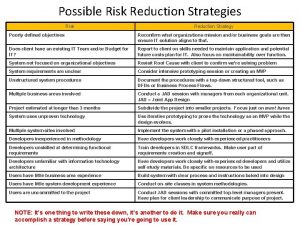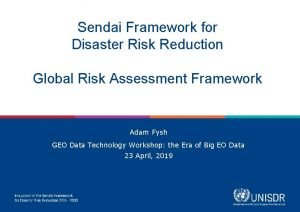ICTs in Disaster Risk Reduction and Disaster Response















- Slides: 15

ICTs in Disaster Risk Reduction and Disaster Response Poonam Pokhrel Chanrd Bilash Bhurtel Saroj Ghimire Sanjay Kumar Tiwari Group 6

DISASTER � Earthquake � Drought � Flood � Snake � Landslides � Soil erosion � Fire (wild and artificial) � Hailstorms � Thunderstorms � Lightning � Hailstorms bites � Landslides � Avalanches � Glacial lake outburst Flood (GLOF) � Epidemic disease and infections, etc

Disaster Risk Reduction � Disaster risk reduction (DRR) is a systematic approach to identifying, assessing and reducing the risks of disaster. � The UN International Strategy for Disaster Reduction describes it as: the concept and practice of reducing disaster risks through systematic efforts to analyze and manage the causal factors of disasters, including through reduced exposure to hazards, lessened vulnerability of people and property, wise management of land the environment, and improved preparedness for adverse events. UN International Strategy for Disaster Reduction, 2007

NEPAL � In the top 20 th list of the most multi-hazard prone countries in the world. � Stand 4 th in Climate Change Vulnerability � Stand 11 th in Earthquake Vulnerability � Stand 30 th in Water Induced disaster line Flood. � Global hotspots for geographical and climatic hazards. � Other major disasters in Nepal are landslide, fire, drought, epidemic, storm, hailstorm, avalanches, glacier lake out burst flood. Source: NEOC, MOHA

Incidents

Incidents in Data Table 1: Incident Reports of Apr 14, 2016 to July 15, 2017 Fire 1386 Flood 199 Landslides 229 Wind Storm 58 Epidemic 6 Other 393 Source: - http; //drrportal. gov. np/reports (accessed July, 2017

Table 2: Incident Reports of Apr 14, 2016 to July 15, 2017 Incident Loss of life 2271 454 Missing 53 Injured 863 http: //drrportal. gov. np/reports (accessed July, 2017)

Table 3: Incident Reports of Apr 14, 2016 to July 15, 2017 Incident Families House Damages Partial 2271 11962 910 Cattle Shed Cattle Loss Full 2097 630 6427 Source: http: //drrportal. gov. np/reports (accessed July, 2017)


ICT IN DISASTER � Understanding disaster risk � Strengthening disaster risk governance to manage disaster risk � Investing in disaster risk reduction for resilience � Enhancing disaster preparedness for effective response and to ‘Build Back Better’ in recovery, rehabilitation and reconstruction. According to Sendai Framework for Disaster Risk Reduction 2015 -2030

Legal and Policy Framework on DRM � Natural Calamity (Relief ) Act, 1982 � Local Self‐government Act, 1999 devolution of responsibility and authority for DM at the local level‐ DDC, Municipality& VDC. � National Strategy on Disaster Risk Management, 2009 � National Disaster Response Framework, 2013 � Guidance Note on Disaster Preparedness and Response Planning, 2011 � National Strategic Action Plan for Search and Rescue, 2014 � District Disaster Preparedness and Response Plans � DM Act 2063 for an effective DRM effort (pending)

Finding � Lack of Disaster Response laws � Lack of coordination among governmental agencies � Proper Coordination among local authorities � Adequate and accurate use of information dissemination

Conclusion Importance of ICTs in Disaster Risk Reduction and Disaster Response as one of the major agenda for developing and implementing policies which should act to minimize the casualties of disaster should be realized. Finalize DM Act 2063, which is still pending under cabinet and implement accordingly.


Thank you
 Philippine disaster risk reduction and management act
Philippine disaster risk reduction and management act National disaster risk reduction and management framework
National disaster risk reduction and management framework Icts dublin airport
Icts dublin airport Icts leuven
Icts leuven Bdrrm plan message
Bdrrm plan message Avoidance risk
Avoidance risk Liquidity measures
Liquidity measures Global facility for disaster reduction and recovery
Global facility for disaster reduction and recovery Principles of incident response and disaster recovery
Principles of incident response and disaster recovery Principles of incident response and disaster recovery
Principles of incident response and disaster recovery Natural response and forced response
Natural response and forced response Natural response circuit
Natural response circuit A subsequent
A subsequent George washington crisis management
George washington crisis management Disaster response curve
Disaster response curve Park hazard response curve
Park hazard response curve
